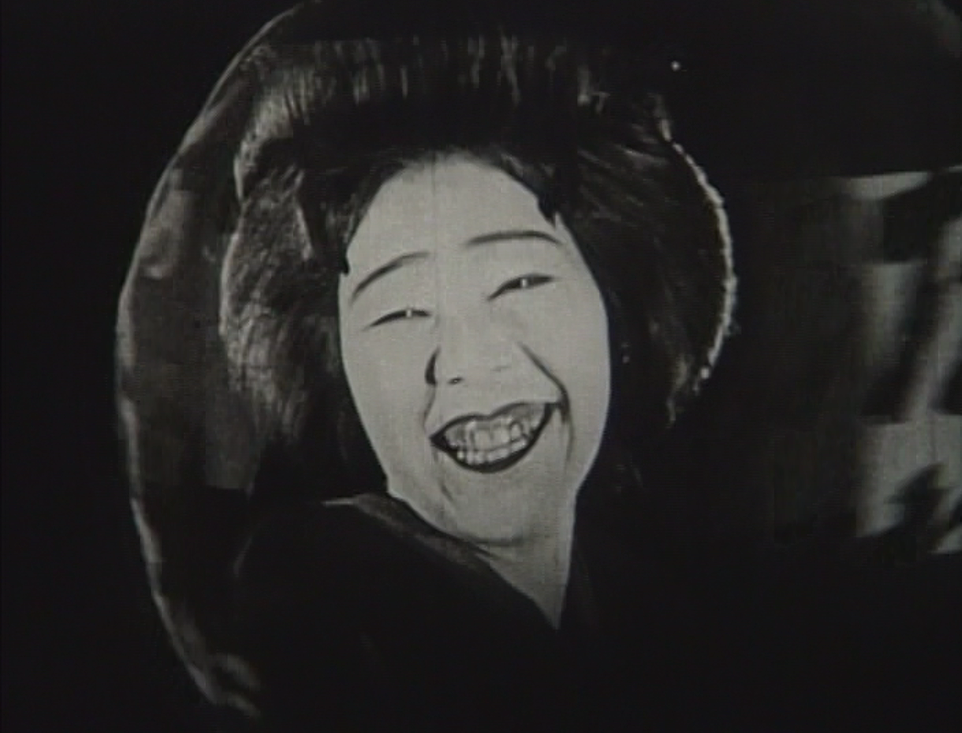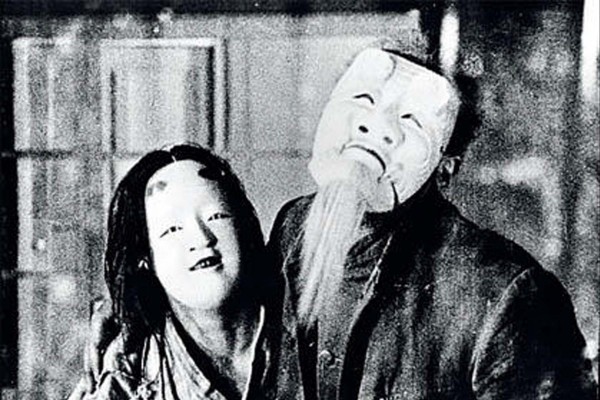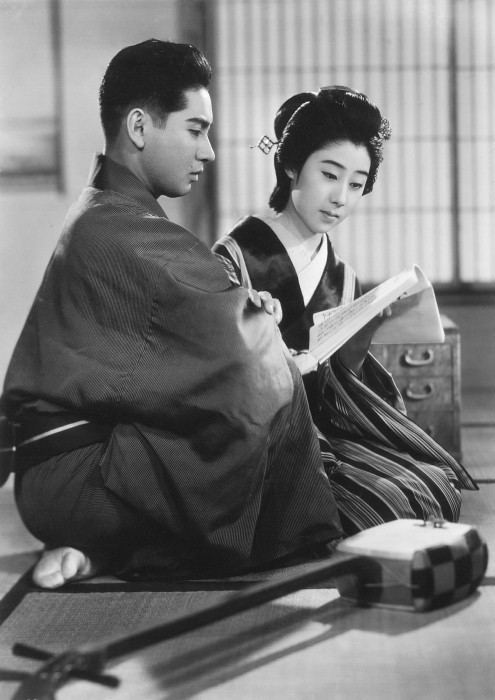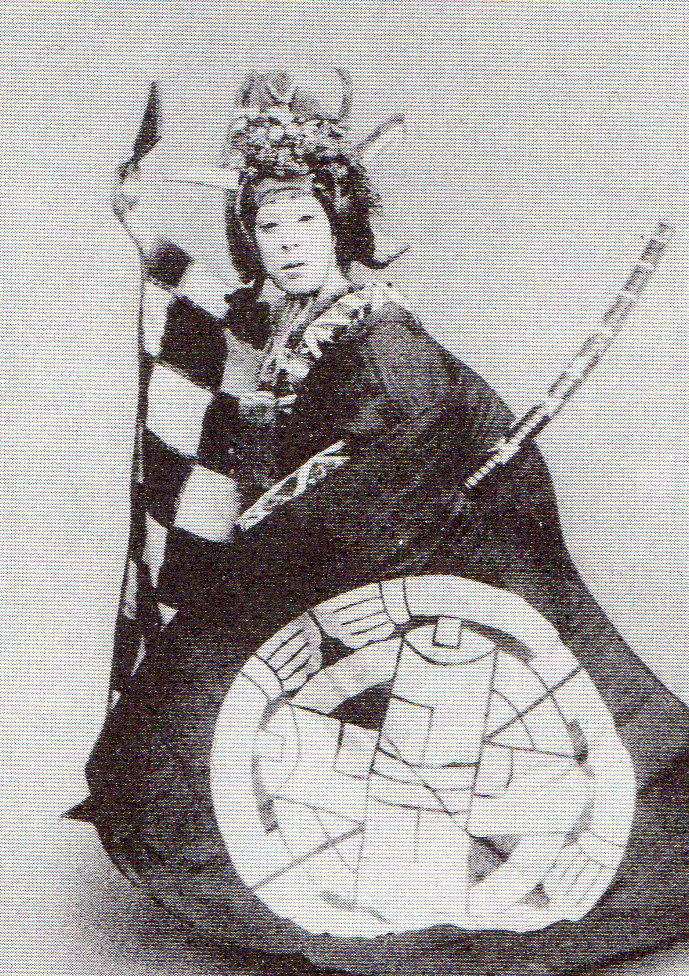Teinosuke Kinugasa was a pioneering Japanese film director active during the silent and early sound era of Japanese cinema. He directed over 80 films during his long and prolific career spanning five decades, and is best known for avant-garde and expressionist works that often dealt with human psychology and eroticism.
Early Life and Silent Film Career
Kinugasa was born in 1896 in Kameyama, Mie Prefecture. He started out as an actor specializing in female roles for the theatrical troupe Momban-za in Kyoto before entering the film industry in 1917 as an actor for Nikkatsu studios.
Acting Roles
In his early acting roles, Kinugasa frequently played female characters due to his slender build and refined features. His roles were mainly in short films and adaptations of kabuki plays.
Directorial Debut
He made his directorial debut in 1922 with the film Jujiro, departing from his onnagata (specialist in female roles) image. The film was about a young man from a well-to-do family who falls into poverty.
The Silent Film Era

Kinugasa rose to prominence in the silent era, directing some of the most innovative and artistic films of the time. He gained a reputation for his meticulous, expressive visual style.
His use of avant-garde techniques was seen in A Page of Madness (1926), a brilliant psychological drama told without intertitles. This film cemented his position as a leading avant-garde filmmaker.
Kinugasa was strongly influenced by German expressionist cinema, incorporating expressionist elements in films like Jujiro (1928) and Crossroads (1928). These films made dramatic use of lighting and compositions.
Many of Kinugasa’s silent films dealt with eroticism and human psychology in a mature way unseen in Japanese cinema at the time. For example, Jujiro contained nudity.
Kinugasa’s reputation grew internationally in the late 1920s. A Page of Madness and Crossroads were both screened to acclaim overseas, bringing recognition to Japanese cinema.
Transition to Talkies

When sound films emerged in the 1930s, Kinugasa adapted his style and continued making innovative works. He was one of few silent-era directors who succeeded in the sound era.
He directed his first talkie film, The Neighbor’s Wife and Mine, in 1931. It was a dramedy about marital infidelity, showing Kinugasa’s versatility with new technology.
In the 1930s, Kinugasa created several successful jidaigeki (period drama) films. Notable examples include the critically praised masterpiece An Actor’s Revenge (1935).
Kinugasa skillfully incorporated music in his sound films. He collaborated closely with composers to create scores that heightened the psychological intensity of his work.
Like others, Kinugasa directed propagandistic nationalist films during the Fifteen Years War, including the 1941 film The Imperial Navy. However, his humanist signature style still came through.
Postwar Humanist Films

After World War II, Kinugasa returned to directing more personal, humanist films examining Japanese society and values. These films were complex and at times self-critical of Japan.
In films like Actress (1947), Kinugasa presented a nuanced portrayal of women’s roles in postwar Japan. Gate of Hell (1953) criticized rigid social conventions.
He enthusiastically adopted color cinematography after the war, using vivid color expressionistically in films like Actress and Gate of Hell.
Gate of Hell won the Palme d’Or at Cannes in 1954 – the first Japanese color film to earn international honors. It brought wider attention to Japan’s postwar cinema.
Even in his later years, Kinugasa continued to innovate. In the 1960s, he made some of Japan’s first independent experimental films, including Komachi (1961).
Legacy and Influence
Kinugasa was a true cinematic artist and visionary who left a lasting impact on Japanese film. Through a long, diverse career, he created some of Japan’s greatest cinematic masterpieces.
He pioneered many avant-garde techniques like cross-cutting and expressive camerawork that were tremendously influential on subsequent generations of Japanese filmmakers.
Kinugasa broke ground in artistic storytelling, often eschewing genre conventions in favor of psychological realism. This expanded the possibilities of Japanese cinema.
He was the first Japanese director to earn wide international acclaim and recognition at major overseas film festivals. This helped establish Japan as a serious filmmaking nation.
Kinugasa’s works directly inspired acclaimed directors like Akira Kurosawa, who paid homage to Kinugasa’s silent films. His legacy continues to inspire filmmakers today.
Teinosuke Kinugasa’s Filmography
Tsukigata Hanpeita (1925)
Genre: Jidaigeki (period drama)
Plot: The film tells the story of Tsukigata Hanpeita, a samurai who is forced to become a ronin (masterless samurai) after his lord is killed. Hanpeita sets out on a journey to avenge his lord’s death, but he soon finds himself caught up in a web of intrigue and betrayal.
Reception: The film was a critical and commercial success, and it is now considered to be one of the greatest Japanese films of all time. Praised for its innovative cinematography and editing, it also gained recognition for its realistic portrayal of violence and its complex characters.
A Page of Madness (1926)

Genre: Experimental drama
Plot: The film follows the story of a man who is driven to madness by his obsession with a young girl. The film is known for its use of subjective camerawork, expressionistic lighting, and rapid editing, conveying the sense of the protagonist’s mental breakdown.
Reception: Initially met with controversy due to its unconventional style, the film would later be hailed as a masterpiece of experimental cinema. It was praised for its innovative techniques and its ability to capture the protagonist’s mental state. However, the film’s dark and disturbing content led to its banning in several countries.
Oni Azami (1927)

Genre: Historical drama
Plot: The film tells the story of Oni Azami (Demon Thistle), a legendary warrior who is forced to flee his village after killing a man in self-defense. The film depicts the journey of the protagonist as he roams through the blighted landscape of post-war Japan.
Reception: Oni Azami was a critical and commercial success making it one of the highest-grossing films of the year. It was praised for its powerful performances, stunning visuals, and its exploration of themes such as revenge, loyalty, and the consequences of violence.
Crossroads (1928)
Genre: Drama
Plot: The film tells the story of two friends who are forced to choose between their loyalty to each other and their own personal ambitions. The film explores the themes of friendship, betrayal, and the sacrifices that must be made in order to achieve success.
Reception: Crossroads was a commercial success and received positive reviews from critics, it was praised for its realistic portrayal of human relationships and its exploration of complex moral dilemmas.
An Actor’s Revenge a.k.a. The Revenge of Yukinojo (1935)
Genre: Jidaigeki (period drama)
Plot: The film tells the story of Yukinojo, a kabuki actor who is forced to seek revenge on the men who murdered and abducted his family. The film features elaborate stage productions of kabuki and even Bunraku, and it explores the themes of revenge, honor, and redemption.
Reception: The film was praised for its stunning visuals, lavish stage sets, and powerful performances. Widely acclaimed as a masterpiece of Japanese cinema, it was hugely popular with both critics and audiences.
Aru yo no Tonosama (1946)
Genre: Comedy, Fantasy
Plot: On New Year’s Eve, a group of actors from a struggling kabuki theater encounter a mysterious character known as “His Lordship” who whisks them away to the Moon where they encounter various supernatural beings and oddities. Filled with magical events and humorous slapstick moments, the film deals with themes of theater and the transformative nature of art.
Reception: Celebrated for its innovative storytelling, imaginative visuals and witty dialogue, it was both a critical and commercial success in post-war Japan.
Dedication of the Great Buddha (1952)
Genre: Historical drama
Plot: The film tells the story of the construction of the Great Buddha of Kamakura, a monumental statue that has become a symbol of Japan. The film follows the efforts of the people who worked on the statue, and it provides a glimpse into the history and culture of Japan during the Kamakura period.
Reception: Highly acclaimed, the film was particularly lauded for its stunning cinematography, historical authenticity and moving depiction of the power of faith and determination in the face of adversity.
Gate of Hell (1953)
_Isao_Yamagata_2.jpg)
Genre: Historical drama
Plot: Set in 12th century Japan, the film tells the tale of a warrior who returns home from battle to find his castle and clan destroyed. Consumed by grief and rage at the destruction and death his clan suffered, he descends into a dark path of violence and vengeance.
Reception: Renowned for its vivid colors, striking compositions, innovative camera techniques, and its masterful depiction of the consequences of war and the fragility of human existence. It was also a commercial success, becoming one of the most successful Japanese films of all time.
The Romance of Yushima a.k.a. The White Sea of Yushima (1955)

Genre: Romance, Drama
Plot: In the aftermath of the Great Kanto Earthquake, the paths of a young woman whose family is destroyed in the disaster and an artist haunted by a tragic past intersect. The film portrays the characters’ struggle to find love and rebuild their lives amid the ruins and devastation.
Reception: Praised for its delicate storytelling, beautifully framed shots, and nuanced characterization. Often cited as one of the director’s most aesthetically captivating works showcasing his poetic approach to filmmaking.
Tsukigata Hanpeita: Hana no maki; Arashi no maki (1956)
Genre: Historical drama
Plot: A two-part remake of the 1925 film “Tsukigata Hanpeita,” this film retells the story of a samurai who seeks vengeance for the murder of his lord. With stunning visuals and innovative filmmaking techniques, the film explores themes of loyalty, betrayal, and the search for justice.
Reception: The film was a critical and commercial success, with many critics praising its masterful storytelling, stunning visuals, and powerful performances.
A Fantastic Tale of Naruto (1957)
Genre: Historical fantasy
Plot: In this whimsical tale, a young man journeys to the past and encounters a group of magical creatures. With beautiful visuals and imaginative storytelling, the film offers a unique perspective on Japanese folklore and mythology.
Reception: Celebrated for its imaginative visuals, playful storytelling, and captivating performances particularly from the renowned comedic actor Ennosuke Ichikawa.
A Girl Isn’t Allowed to Love (1957)
Genre: Romantic drama
Plot: A young woman falls in love with a man who is already committed. The film explores the complexities of love, desire, and sacrifice in the face of societal norms and expectations.
Reception: Acclaimed for its realistic portrayal of female desire and the challenges of navigating love and relationships in a restrictive society.
Floating Vessel (1957)
Genre: Drama
Plot: The film follows the lives of a group of women living on a houseboat in Tokyo during the post-war period. The film explores themes of resilience, sisterhood, and the challenges of everyday life in a rapidly changing Japan.
Reception: Celebrated for its evocative portrayal of post-war Japan and its exploration of women’s lives during a period of transition.
The Snowy Heron (1958)
Genre: Drama, Literary adaptation
Plot: Based on a novel by Yasunari Kawabata, the film tells the story of a young man who returns to his hometown to find that his childhood sweetheart has become a geisha in the local red-light district. The film explores themes of love, loss, and the complexities of human relationships.
Reception: Hailed for its lyrical cinematography and poignant portrayal of unrequited love. It also gained attention for its adaptation of Kawabata’s work, bringing his literary style to the screen.
Symphony of Love (1958)
Genre: Romantic drama
Plot: In a small town in Japan, a young composer falls in love with a deaf woman. The film explores the challenges and triumphs of their relationship as they navigate societal prejudices and the complexities of communication.
Reception: Praised for its sensitive portrayal of love and disability, the film resonated with audiences for its heartwarming story and beautiful music.
Bronze Magician (1963)

Genre: Fantasy
Plot: A struggling magician is granted a magical feather that allows him to transform objects into gold. As he begins using this newfound power for personal gain, he soon discovers the dangerous consequences of his actions and the true nature of magic.
Reception: Celebrated for its creative use of special effects and grand visuals, the film became a commercial success and was praised for its unique blend of fantasy, drama, and social commentary.



